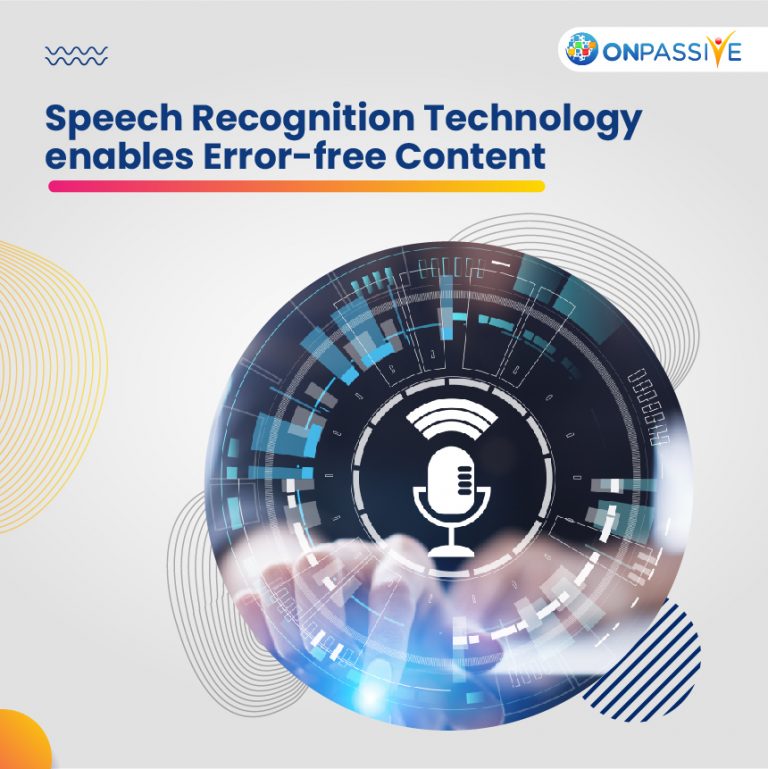
In recent years, speech recognition technology has grown increasingly widespread. Technology is frequently employed by companies and individuals alike because of the numerous benefits it brings.
“Hey, Siri,” “OK Google,” and so on — Voice recognition, often known as speech recognition technology, is not a new concept in the globe (SRT). It refers to a type of technology that can transform spoken words into machine-readable forms. You can now communicate to your devices and have them act on your commands, much as in science fiction tales.
Because most speech recognition technologies have an accuracy rate of over 95%, it’s no wonder that voice searches will account for over 50% of all searches by 2020. Beyond personal mobile devices, speech recognition has established a strong footing in businesses, particularly for improving customer service and fighting cybercrime.
Healthcare is no stranger to voice recognition technologies. Doctors have been transcribing their clinical notes using this technology for many years. However, as additional technologies such as artificial intelligence, machine learning, and natural language processing make their way into the healthcare industry, speech recognition technology has the potential to drastically change how physicians, nurses, and patients communicate.
So, what are the benefits of speech recognition technology? When typing is typically faster, why do we need computers to interpret our speech? Many non-computer programs, which are becoming increasingly prevalent, have a natural interface in speech.
Benefits Of Speech Recognition Technology
Here are a few benefits of speech recognition technology and its significance in people’s lives.
● It’s More Efficient:
Because most individuals talk quicker than they write, voice recognition software makes it straightforward to input words into a text without having to wait. Many people seek out its use because of its quickness. Typing, on the other hand, might make communication take longer.
● Providing Consistent Outcome:
The speech recognition software may produce an almost error-free paper; however, it should always be proofread. Furthermore, newer programmers are more likely to be well-designed and provide consistent outcomes in some cases.
It enables tasks to be done without the use of one’s hands. Speech recognition software makes it easier to take notes, utilise other resources, and maintain professional eye contact when dealing with a customer or completing a task. When someone needs to input data into a computer behind a screen, each of these tasks is constrained.
While these advantages are attractive, consumers must also consider some restrictions.
● Uses Robots To Communicate:
You might not consider conversing with robots to be a frequent occurrence. However, robots are gradually replacing people in jobs such as communication and interaction. Firms are already looking towards employing robots and software to conduct first job interviews, for example. Because interviews must be communicative, the robot must be able to understand what the interviewee says. Speech recognition software is required for this.
● Controlling Digital Devices:
Digital personal assistants like Alexa and Google Home require people and computers to communicate verbally. They’re also great illustrations of how machine learning, computers can improve their comprehension of your voice over time. However, to do this, voice recognition technology, which is enabled via signal processing, is required.
● Providing Support For The Blind And Deaf:
Screen readers and text-to-speech dictation devices are used by many persons who have visual impairments. For the deaf and hard of hearing, translating audio to text may be a lifeline.
● Hands-Free Technology:
Speech is extremely beneficial while your eyes and hands are occupied, such as when driving. The ability to connect with Apple’s Siri or Google Maps to get you where you need to go minimises the risk of getting lost and eliminates the need to pull over and operate a phone or read a map.
Conclusion
Speech recognition technology is now a part of our daily life, although it is still confined to simple requests for the time being. Researchers will be able to develop more sophisticated systems that interpret conversational speech as technology progresses. One day, you’ll be able to converse with your computer in the same manner that you would come with a human, and it would respond with rational replies.
Signal processing technology will make all of this feasible. The demand for professionals in this sector is increasing, and many organisations are searching for bright people to join them. Many powerful new technologies and ways of communication rely on processing, interpreting, and comprehending voice signals. Speech recognition will continue to be a fast-growing subset of signal processing in the following years, based on present trends. Contact ONPASSIVE now to learn more about the leading SRT platforms.


